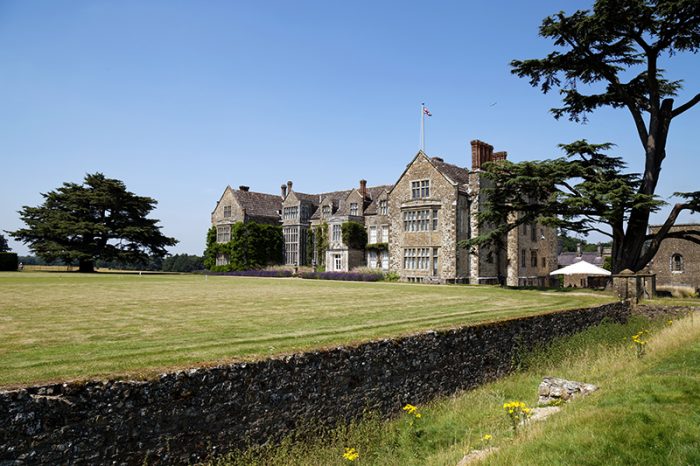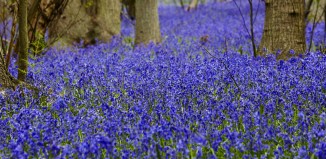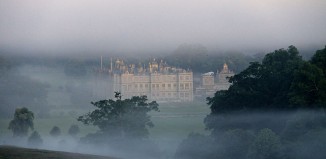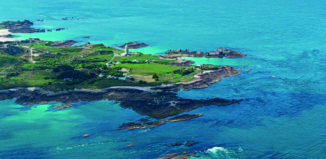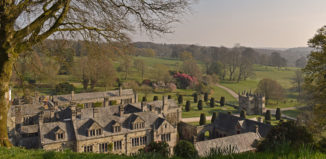Parham House: An Elizabethan estate in West Sussex
Words: Vicky Sartain
The approach to Parham hints at what lies ahead. A long drive stencilled on the landscape wends its way across deer-dotted parkland to a 16th-century house, its honey tones blending into the Sussex countryside and multiple Elizabethan chimneys rising heavenward. Parham has been enchanting visitors since 1948, and bewitching its residents a good deal longer. The latest custodian is Lady Emma Barnard whose ancestors have walked the halls and strolled the grounds of this 875-acre estate for close to a century. “It’s like living in the centre of an enormous jigsaw puzzle that never stops growing,” she says. “There are so many aspects of a place like this and history behind every facet, from the chattels to the garden. We’re constantly finding fascinating new things and our visitors arrive with searching questions that lead to fresh discoveries. Some people imagine that old properties like this are static, stuck in time, but Parham absolutely isn’t – it has an energy all of its own.”
Parham’s first incarnation was as a collection of 14th-century manorial buildings within the heart of a tiny settlement that has long since vanished. This formed two abbey estates owned by the Monastery of Westminster and a private family, which comprised abbey buildings, a thatched hall, chamber, kitchen and grange thought to be sited close to the present house. St Peter’s Church, which is located within the Parham estate boasts an even longer history, dating to 1150, although it was largely rebuilt in the 1800s. Henry VIII saw to the swift disintegration of Parham’s buoyant abbey community, and in 1540 granted the manor to Robert Palmer, a London mercer who spent little time on the country estate. A little further down the family line, Palmer’s grandson William sowed the first seed of interest in the life of Parham when he married Elizabeth Verney, god-daughter of Elizabeth I, and set about creating a property to meet their needs. Their young son Thomas laid the foundation stone of the new house in 1577 and, in doing so, began the story of Parham as we know it. It is a tale that unfolds in unhurried chapters. Construction took six years, using locally sourced materials including Pulborough, Caen, Bath and Portland stone.
The design of the house was typical of the Elizabethan H-plan, featuring a Great Hall at its heart. Unfortunately the inheritance left for young Thomas Palmer was wasted on him. In adult life he swapped dry land for adventures on the high seas and served with Sir Francis Drake. Swashbuckling and sailing had greater appeal than Sussex, and Parham was leased and later sold to Thomas Bisshopp of Henfield in 1601 for just £4,500. The Bisshopp line continued for several generations, each remodelling as they saw fit. When Lady Emma’s great grandparents Clive and Alicia Pearson bought Parham in 1922 the entire estate comprised 3,733 acres, although much of that land is today owned by the RSPB Pulborough Brooks Nature Reserve. The house itself was in a sorry state but with love and care was gently restored and decorated to fulfil its potential.
“The house has only ever been lived in by three families,” says Lady Emma. “Alicia and Clive invested time and money in this extraordinary project, a labour of love for them both. Clive was a civil engineer and worked at home and abroad – how he had the energy to restore Parham I don’t know, but he was very lucky in Alicia – she took great interest in sympathetically reviving the interiors.” Together the couple stripped back modifications installed during the Victorian age and earlier still, to reveal the original Elizabethan features such as fireplaces and interior windows. They stamped their personality on it, albeit sensitively. “Clive’s parents couldn’t understand their devotion to Parham, why they didn’t build themselves a state of the art residence instead,” Lady Emma reveals.
Part of the wonder of reviving Parham has been in piecing together the social history, particularly during the Pearsons’ occupancy. The letters sent between husband and wife document the refurbishment process when Clive was working away from home, while photographs show the restoration and Parham’s role during the Second World War, as well as the property’s first public opening. “With help from the West Sussex Record Office we have put together an exhibition (on display off the Long Gallery) on the Parham story between 1922 and 1948 to explain the influence of my great grandparents and great aunt, and what life was like here then,” continues Lady Emma. In 1939 Parham was requisitioned by the War Department to house evacuee children from Peckham in south east London, and later acted as a base for three Canadian infantry divisions. Although the property had survived relatively unscathed from this occupation, the Pearsons debated whether or not to move back into the entire house or just part of it. “Alicia’s scholar friend Rupert Gunnis advised them to open to the public but in those days that was not a normal thing for a small private house,” explains Lady Emma. “They genuinely thought no one would be interested but were tremendously excited when the first visitors arrived. They even started buying things that they thought people might like, such as paintings of English monarchs and individuals connected with the house through the centuries. They embraced the project and kept a part of the house for their own living quarters, which is the same space that my family use today.”
Especially welcome were a group of visitors who knew Parham well and were keen to return to their old stomping ground in the country. “The evacuees still come back to see us. We had a reunion for them a few years ago and it was such a moving day. The stories that came out – a lot of them hadn’t seen each other since they left the house in 1942. They spent about three years of their lives here and remember it fondly. We have learned so much from them about that time.” Lady Emma’s great aunt Veronica inherited Parham in 1974. She shared her mother’s enthusiasm for the property and it became her life’s work to introduce her childhood home to the public, learning all there was to know about it so that she in turn could be an informative guide. “Parham was her baby and she was passionate about it,” recalls Lady Emma. “After her death in 1993, the house came to me at the age of 30. I had three weeks to decide whether I wanted to take it on. I thought that I’d base my decision on staying the night here completely on my own to see how I felt and the rest is history.”
Lyndy Kessell, a guide at Parham for 26 years, gives tours of the house and paints a picture of life there from the mid-16th century. “The layout of the rooms hasn’t changed since the time when Alicia and Clive were resident,” she says. At the top of the house, the 160ft Long Gallery is a breathtaking space decorated with items sourced from around the globe: delicate porcelain, intricate needlework and cabinets and ornaments from the East. The ceiling panels are designed by Oliver Messel and embellished with paintings of trees and plants found in a British garden. “Who would have thought that the ceiling bosses were made of papier mâché?” says Lyndy of the elegant leaf design. Strolling the length of this gallery is a slow process as there is so much to see. Rooms leading off have their own collections, including The White Room with its displays of 17th-century needlework and stumpwork.
While it would be easy to linger inside the house, its grounds are equally stunning. The four-acre Walled Garden shows promise of a good summer display. Rising from the earth are the first shoots of the flowers that scent the entire garden and are used to create stunning arrangements throughout the house, while the fruit and vegetables go direct to the Parham kitchen to feed visitors, as well as the Barnard family. Inside the 20th-century greenhouse a thousand pots are overflowing with colourful flowers and visitors can capture a little of Parham for themselves at the garden shop. Parham is owned by a charitable trust which exists to keep it open in perpetuity. Lady Emma, at the helm, is an energetic caretaker of its future: “My responsibility is to pass the house on to the next generation in as good a state as possible. If one of my sons wanted to take it on they could continue the family tradition.
“In the winter when we close to the public Parham becomes our own again,” she adds, “but it is this time of the year that I love – there’s an air of excitement about the house as we welcome our first visitors of the year.”
Parham’s Walled Garden is one of the biggest draws to the property each summer when its fragrant beds come alive with colour, and an orderly queue begins to form at the garden shop! The garden originates from the 18th century, although it is likely that the ground had been cultivated for centuries before that. Tended lovingly, it is run on organic principles, and designed for a long season of spectacular displays, with its mixed and herbaceous borders lasting well until the first frosts. On the western side of the garden is the orchard with its varieties of apple and other fruit trees, plus almonds, sweet chestnut and walnut. Elsewhere the designated vegetable patch succeeds in being both pretty and practical, while the herb garden produces medieval and Tudor medicinal and culinary foliage. A distinctive feature of the garden wall itself is the Wendy House adapted in 1928 for the Pearsons’ young daughters. The bijou abode features an oak front door and wrought iron balcony. Visitors to both the house and garden will admire the tapestries of floral colour which echo the embroidery seen inside the property. However, this is a relatively new phenomenon. Until the late 1970s the garden was predominantly a base for cultivating vegetables, fruit and cut flowers to fill Parham’s many rooms – the latter a tradition started by Alicia Pearson and spectacularly continued to this day.

